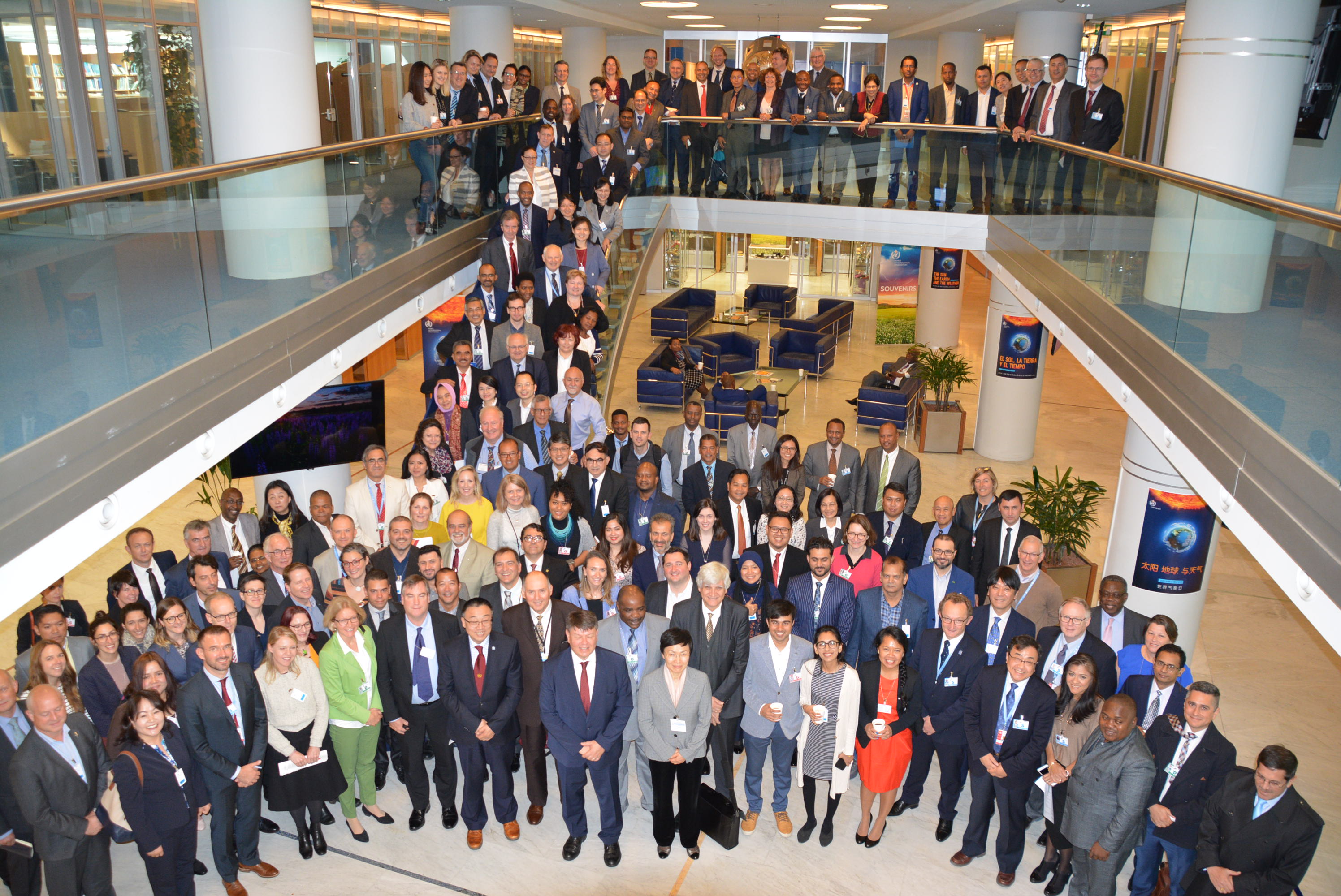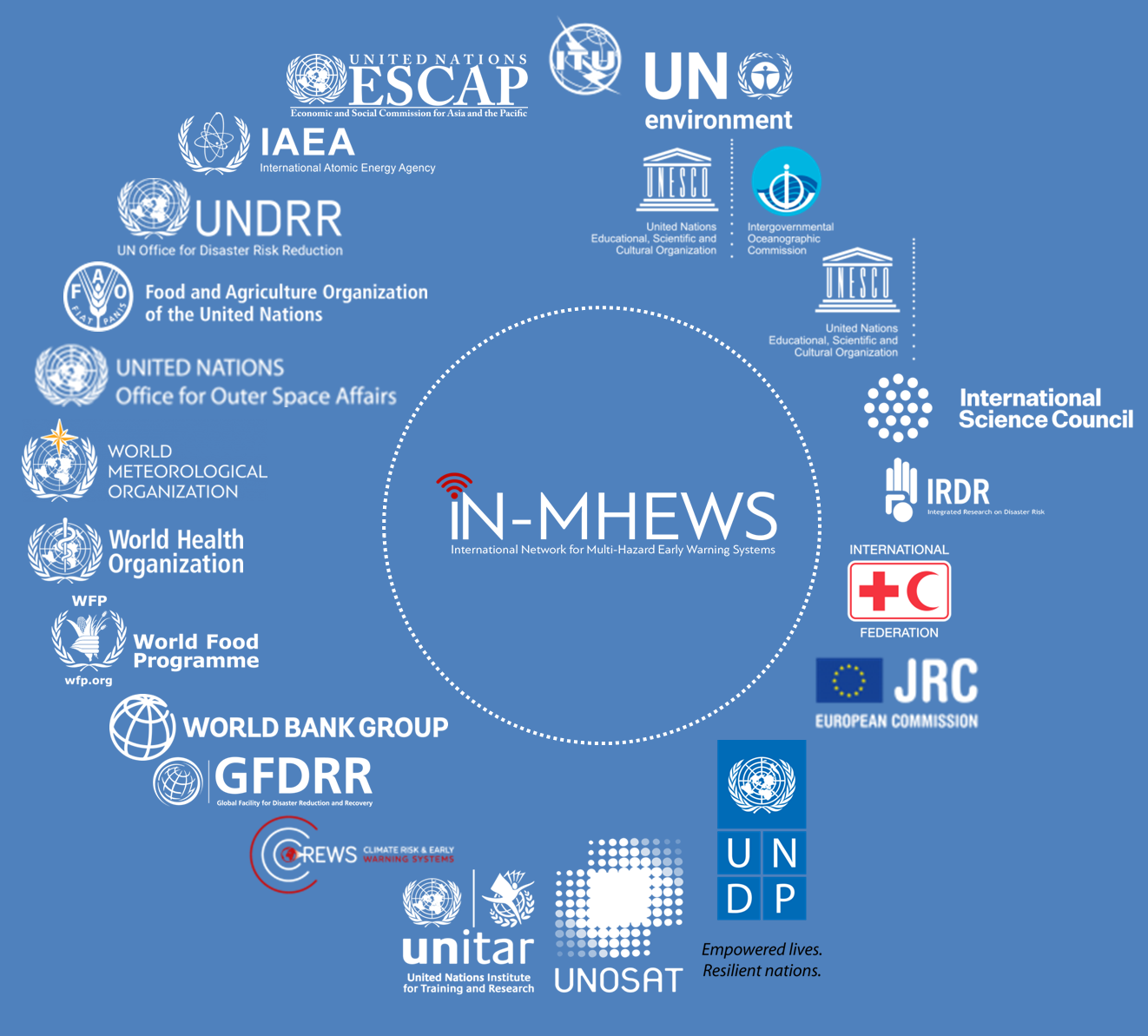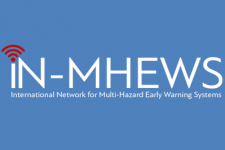Despite significant progress in strengthening early warning systems across the world, often by making use of advances in science and technology, unmet needs remain. Disasters are increasing in frequency and severity in most areas, with climate change and variability exacerbating the situation. Many developing countries, in particular least developed countries (LDCs), small island developing states (SIDS), and landlocked developing countries (LLDCs) , have not benefited as much as they could have from advances in the science, technology and governance behind early warning systems. Significant gaps remain, especially in reaching the "last mile" - the most remote and vulnerable populations at the community level with timely, understandable and actionable warning information), including lack of capacities to make use of the information. The resulting societal benefits of early warning systems have thus been spread unevenly across regions, countries and communities.
The United Nations Office for Disaster Risk Reduction (UNDRR) and the World Meteorological Organization (WMO) Secretariat, along with other international and national agencies such as UNOOSA through its UN-SPIDER programme, established the International Network for Multi-Hazard Early Warning Systems (IN-MHEWS) as a major outcome of the Session on Early Warning at the Third United Nations World Conference on Disaster Risk Reduction (WCDRR) in Sendai, Japan, in 2015. This multi-stakeholder partnership will facilitate the sharing of expertise and good practice on strengthening multi-hazard early warning systems as an integral component of national strategies for disaster risk reduction, climate change adaptation, and building resilience. In doing so, it supports the implementation of the Sendai Framework for Disaster Risk Reduction 2015-2030, especially the achievement of its global target G on multi-hazard early warning systems, and the United Nations Plan of Action on Disaster Risk Reduction for Resilience.
The Second Multi-Hazard Early Warning Conference (MHEWC)
In order to contribute especially to the achievement of Target (g) of the Sendai Framework, several international and regional organizations as well as national institutions with a key role in early warning joined forces and established the International Network for Multi-Hazard Early Warning Systems (IN-MHEWS) during the WCDRR in March 2015. IN-MHEWS aims to facilitate the sharing of expertise and good practice for multi-hazard early warning systems as a national strategy for disaster risk reduction, climate change adaptation, and building resilience. In addition, it aims to guide and advocate the implementation and/or improvement of multi-hazard early warning systems, share lessons learnt regarding early warning and increase the efficiency of investments in such systems for enhanced societal resilience.
To continue its advocacy efforts, IN-MHEWS organized the Second Multi-Hazard Early Warning Conference (MHEWC-II) on 13 and 14 May 2019 as a pre-event to the sixth session of the Global Platform for Disaster Risk Reduction (GP2019), which took place from 15 to 17 May in Geneva, Switzerland. MHEWC-II was held at the Headquarters of the World Meteorological Organization (WMO) in Geneva and was aligned with the guiding principles of the GP2019, building on the momentum created by the "First Multi-Hazard Early Warning Conference (MHEWC-I): Saving Lives, Reducing Losses" in 2017.

As part of its activities, IN-MHEWS organized MHEWC-I as a pre-event of the fifth fession of the Global Platform for Disaster Risk Reduction in 2017 (GP2017). That conference, held in Cancún, Mexico, on 22 and 23 May 2017, brought together more than 450 experts and stakeholders to take stock of recent advances in multi-hazard early warning systems. The key outcome is the publication "Multi-Hazard Early Warning Systems: A Checklist".
Previous early warning conferences
In 1998, 2003 and 2006, three international conferences on early warning took place (apart from other, hazard- and region-specific conferences and symposia on early warning). The German Federal Foreign Office organized the First International Conference on Early Warning (EWC '98) in Potsdam, Germany in collaboration with the Helmholtz Centre Potsdam GFZ German Research Centre for Geosciences. This Conference produced a round-up of existing systems and structures in the fields of early warning and disaster reduction with a focus was on research and science. The Second International Conference on Early Warning (EWC-II) in Bonn, Germany, in 2003 focused on the integration of early warning into policy and decision making and demonstrated the importance of regular and intensive exchange between science and policy for effective early warning. The major objectives of the Third International Conference on Early Warning (EWC-III) in Bonn, Germany, in 2006 were to showcase innovative early warning projects for potential financial support and implementation; to identify unused potential in early warning; and to facilitate multi-disciplinary scientific debate on latest practices and research. EWC-III centred around the theme “from concept to action” and was an initiative of the German Government in response to the devastating Indian Ocean Tsunami in December 2004 to underscore the urgent need to develop early warning systems worldwide. Conference delegates were presented with key recommendations from the Global Survey of Early Warning Systems, a report requested by the United Nations Secretary-General at the time, Kofi Annan. This Survey stressed the importance of filling gaps and improving early warning capabilities worldwide, with a focus on people-centred systems. A key outcome of the EWC-III was the publication Developing Early Warning Systems: A Checklist.
IN-MHEWS steering committee
 FAO, IAEA, IOC-UNESCO, ITU, UNDP, UNESCAP, UNESCO, UNDRR, UNITAR/UNOSAT, UNOOSA/UN-SPIDER, WFP, WHO, WMO, CREWS, World Bank/GFDRR, EU (EC/JRC), IFRC/Red Cross Red Crescent Climate Centre, ISC/IRDR. In 2018/19, the committee is co-chaired by UNOOSA/UN-SPIDER and WMO.
FAO, IAEA, IOC-UNESCO, ITU, UNDP, UNESCAP, UNESCO, UNDRR, UNITAR/UNOSAT, UNOOSA/UN-SPIDER, WFP, WHO, WMO, CREWS, World Bank/GFDRR, EU (EC/JRC), IFRC/Red Cross Red Crescent Climate Centre, ISC/IRDR. In 2018/19, the committee is co-chaired by UNOOSA/UN-SPIDER and WMO.

